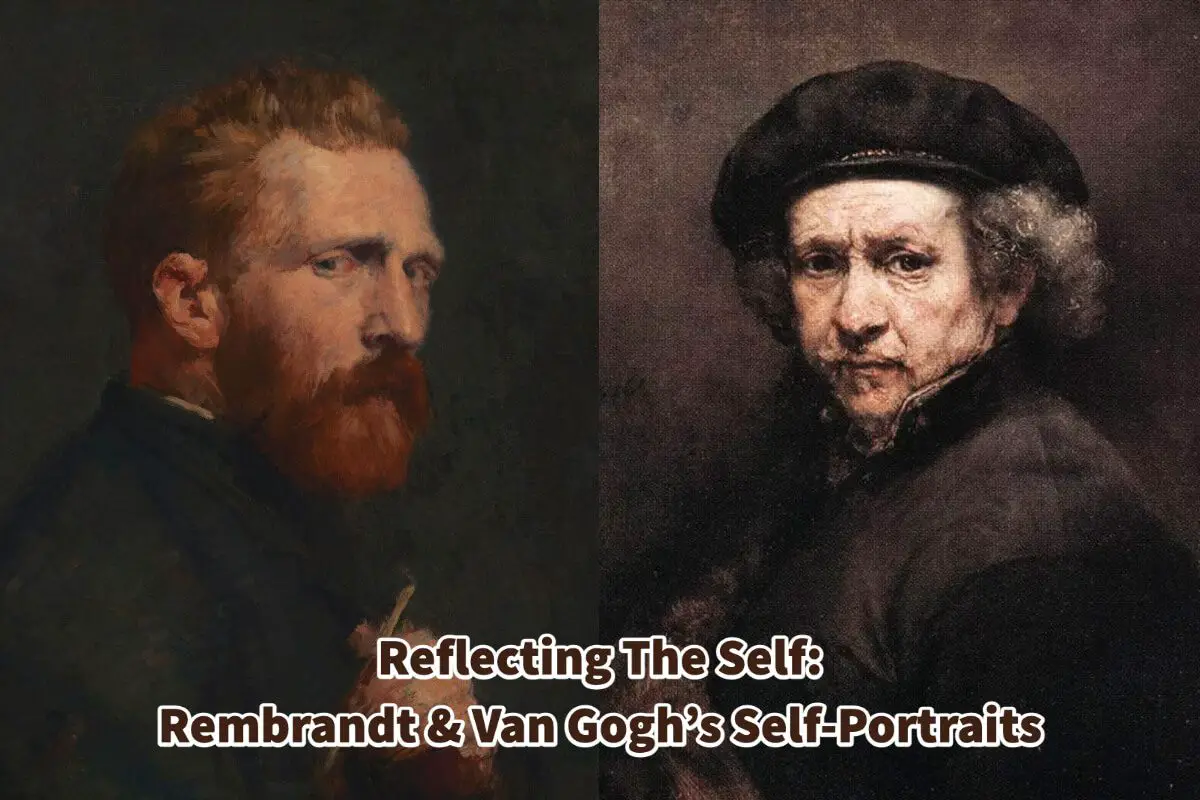Art has always been a gateway into the human soul, a medium through which artists convey their experiences, emotions, and identities. But art can also leave with us a legacy of the life and time of when and how the artist lived.
Rembrandt van Rijn and Vincent Van Gogh are two significant figures who significantly contributed to the self-portraiture tradition. Their works redefine self-portraiture and give us a glimpse into their lives and the periods they lived and worked.
Table of Contents
- Rembrandt And Van Gogh’s Self-Portraits Reflection Explored
- Why Artists Paint Self Portraits: 15 Reasons
- Influence And Legacy Of Rembrandt And Van Gogh’s Self-Portraits
- Frequently Asked Questions
- Related Questions
Rembrandt And Van Gogh’s Self-Portraits Reflection Explored
The self-portrait, a genre fraught with introspection and self-analysis, provides profound insights into the artist’s inner world, serving as a psychological self-study and a reflection of the artist’s persona. The artists’ brushes, dipped in the palette of their unique experiences, often trace lines, forms, and colors beyond physical likeness, extending into emotional, psychological, and existential exploration realms.
Two prominent figures in art history, Rembrandt van Rijn and Vincent Van Gogh have leveraged the medium of self-portraiture in ways that continue to resonate and inspire.
Read on as we delve into the rich universe of Rembrandt and Van Gogh’s self-portraits, tracing these works’ impacts in reshaping artistic conventions and transforming our understanding of self-expression and identity in art. Their powerful and dynamic self-representations offer a glimpse into their lives and the times they lived in and mark significant contributions to the tradition of self-portraiture that opened the door for later artists to express themselves boldly.
Rembrandt: The Master Of Self Portraiture
Rembrandt, a prominent figure of the Dutch Golden Age, was renowned for his revolutionary approach to self-portraiture. He painted nearly 90 self-portraits, including paintings, etchings, and drawings, representing approximately one-tenth of his art collection.
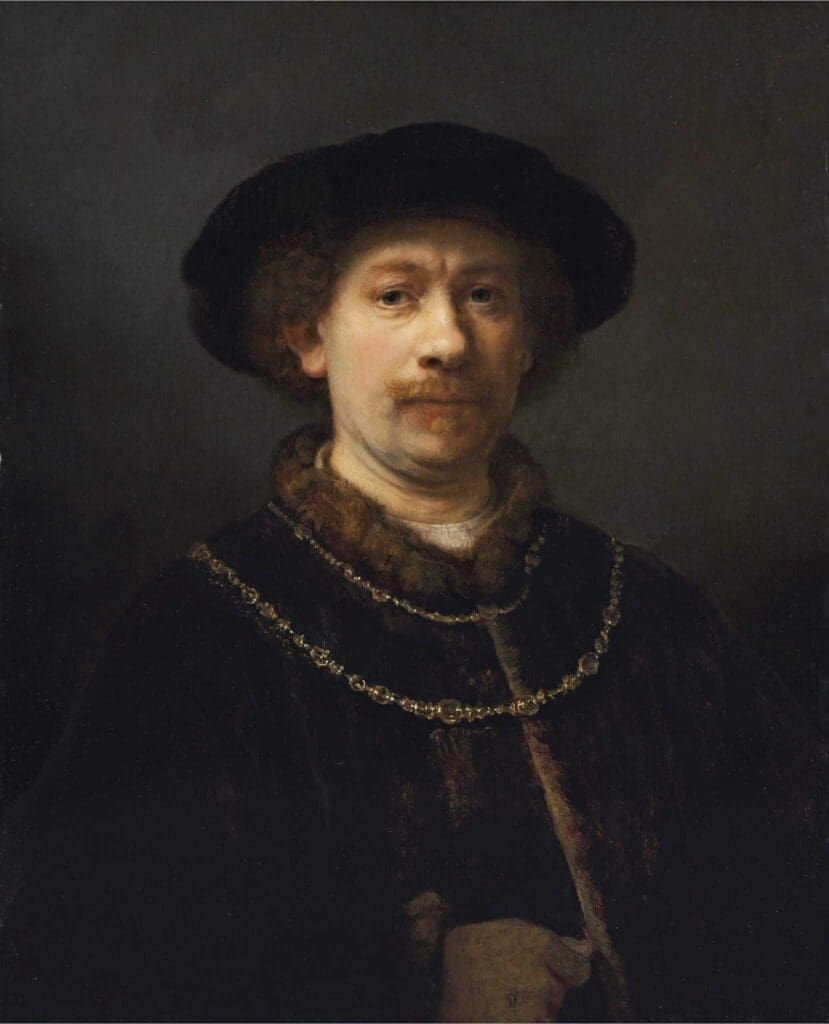
His candid portrayals of aging and self-exploration have set the stage for artists’ self-examination and expression.
Rembrandt’s self-portraits trace the progression of his life from his early youth to his later years. They reveal his introspective nature and the transformation of his technique over time.
His self-portraits also serve as records of his physical appearance, showcasing his aging process with an unflinching honesty uncommon in his era.
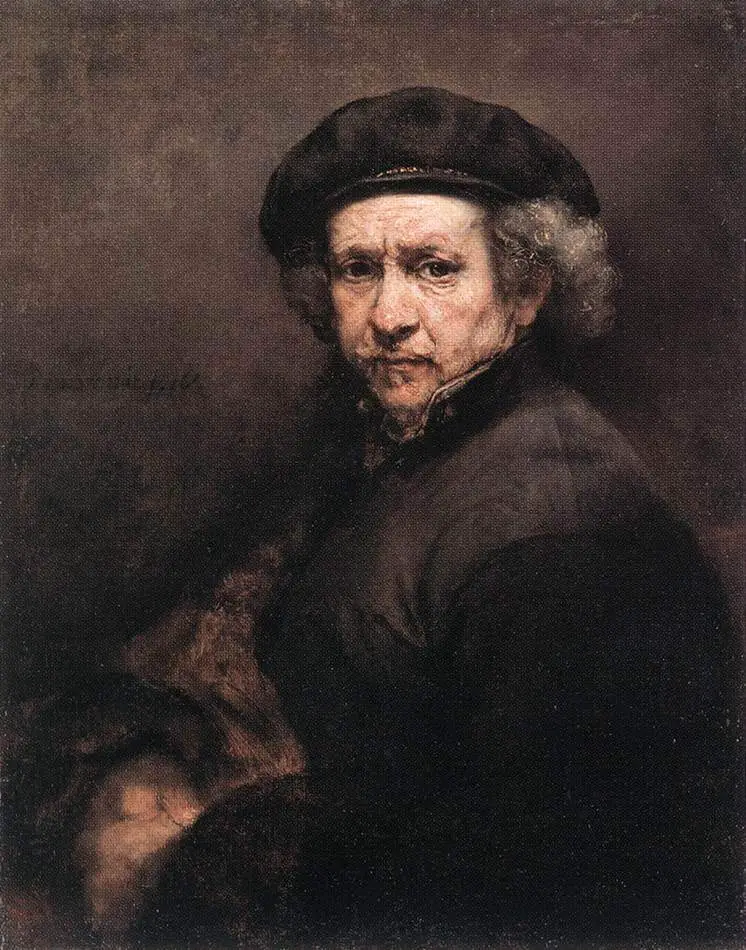
His self-portraits served multiple purposes. They showcased his skills as an artist, acted as promotional tools, and were reflective and introspective pieces through which Rembrandt explored and expressed his identity.
His impact on the art world has been immeasurable, paving the way for countless artists to use self-portraiture as a form of self-expression.
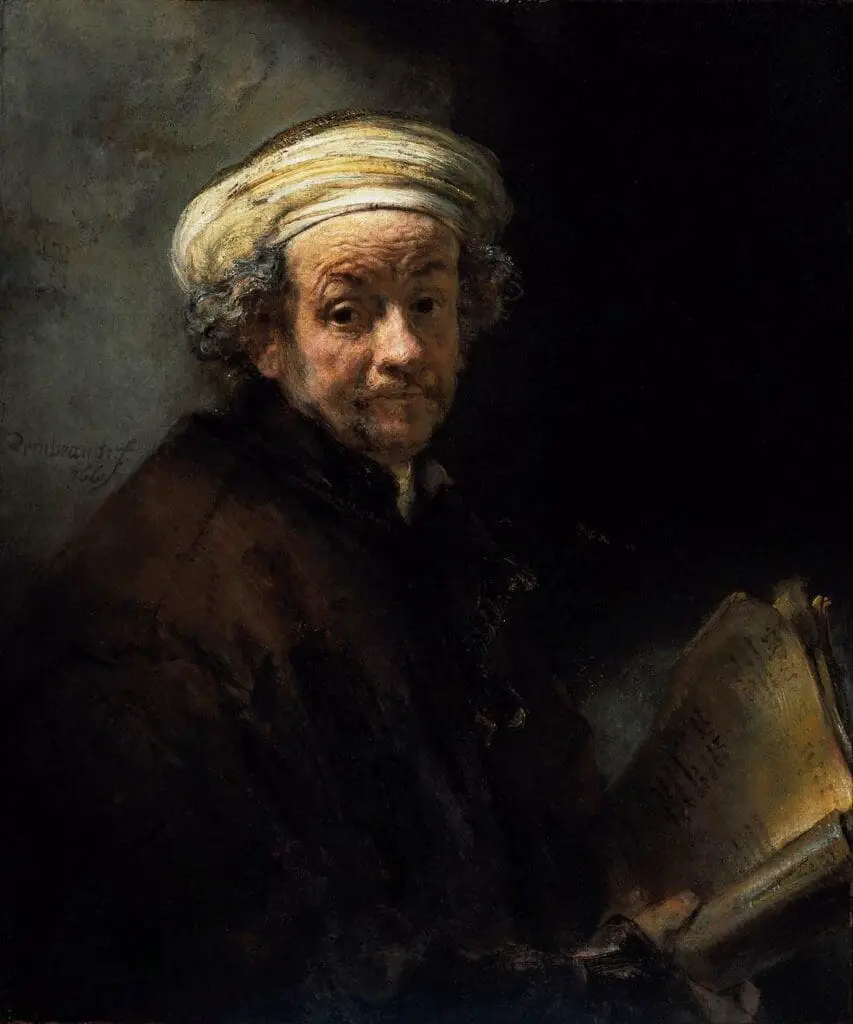
To see many of his most essential self-portraits, read our blog, The Self-Portraits Of Rembrandt In Order, by clicking here.
Van Gogh: Turning Inward In Art
In comparison, Van Gogh’s self-portraiture carries a different form of intensity. His works were concentrated in a short but productive 10-year career. During this time, Van Gogh painted over 30 self-portraits, most within the last years of his life.
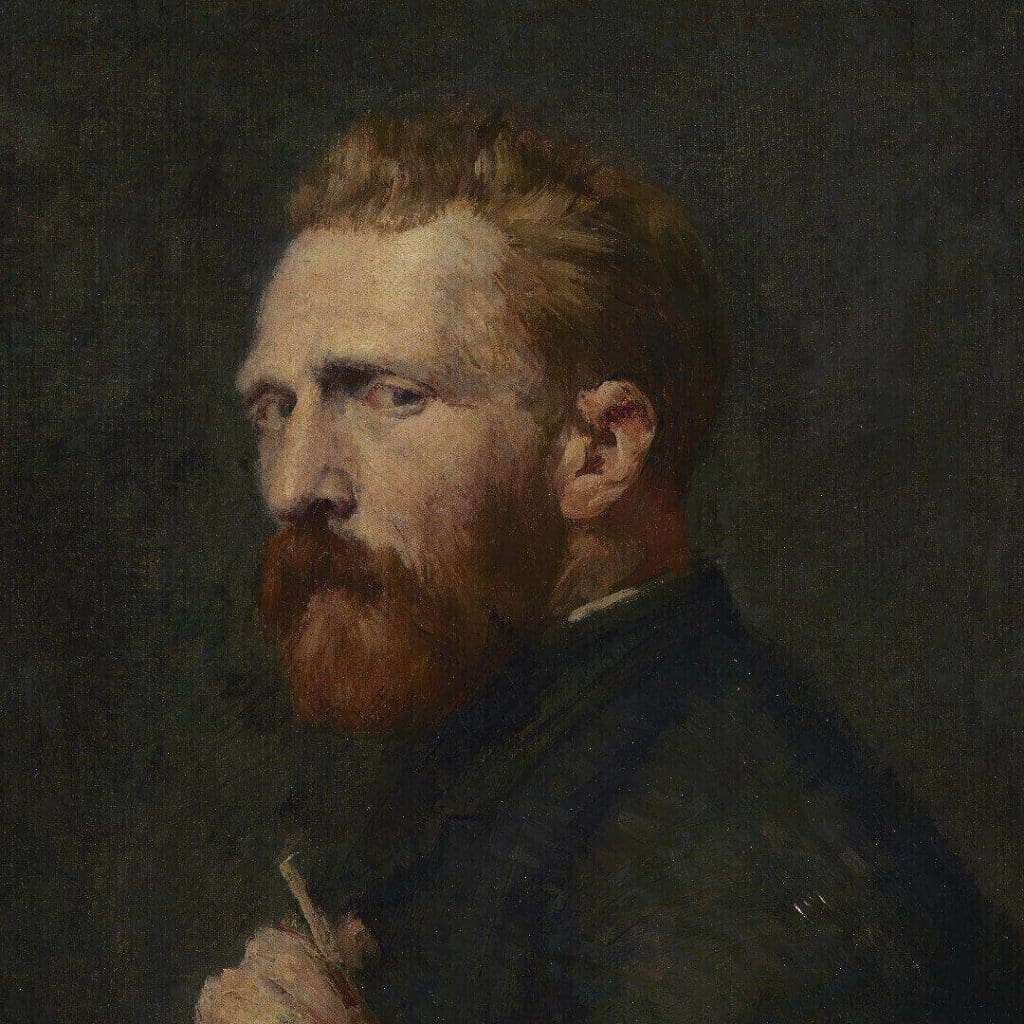
Van Gogh’s self-portraits are potent reflections of his mental state, showcasing his struggles with mental health.
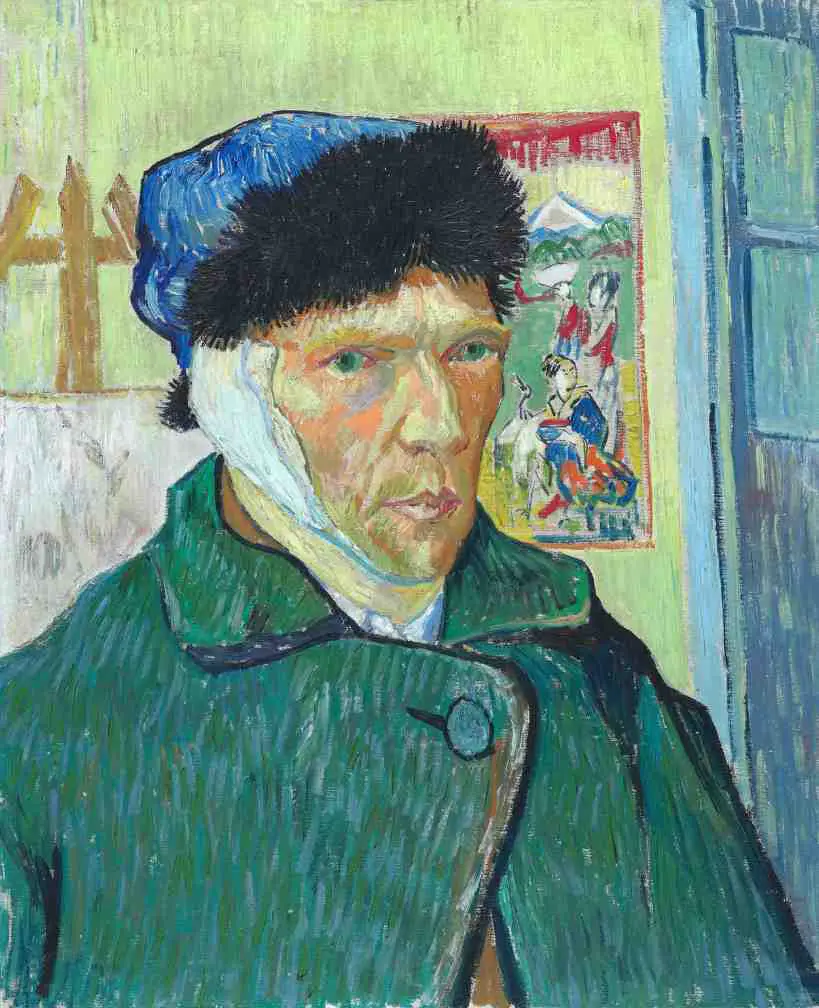
His painting “Self-Portrait with Bandaged Ear” is a striking instance of this, depicting his self-mutilation. It’s not simply a self-portrait but a document of his suffering. Van Gogh was an artist who didn’t shy away from showing his emotional turmoil through his work, influencing artists to treat self-portraiture as a conduit for emotional exploration.
Why Artists Paint Self Portraits: 15 Reasons
Rembrandt and Van Gogh’s compelling self-portraits have inspired generations, underlining why artists might choose to portray themselves.
Here are 15 reasons artists may decide to paint a self-portrait:
Self-Exploration
Self-portraits offer an opportunity for introspection, allowing artists to delve into their identities and explore their emotions, as Rembrandt and Van Gogh exemplify.
Technical Skill
Self-portraiture can showcase an artist’s abilities, demonstrating their mastery over technique, composition, and use of color.
Availability
Artists are always available as subjects, enabling spontaneous creation without a model.
Cost Efficiency
Unlike hiring models, painting oneself is cost-effective and allows unlimited time to study and paint.
Emotional Catharsis
As seen in Van Gogh’s works, self-portraits can serve as a medium to express and process personal struggles and emotions.
Self-Promotion
Artists can use self-portraits to promote themselves and their work, acting as a kind of visual CV.
Historical Record
Like Rembrandt’s self-portraits, they can be a visual timeline of the artist’s life, documenting changes in physical appearance, style evolution, and life experiences.
Symbolism And Allegory
Artists may use self-portraits to portray specific ideas, beliefs, or allegories. Symbolic elements can add depth and layered meanings to the work.
Experimentation
Self-portraits provide a safe canvas for experimenting with new techniques, styles, or concepts without external pressure.
Therapeutic Purpose
Art can be therapeutic. Self-portraits can help artists understand their mental state, helping them cope with stress, anxiety, or other mental health issues.
Cultural Commentary
Through self-portraits, artists can comment on cultural norms, societal issues, and expectations related to identity, beauty, or status.
Personal Narrative
Self-portraits can tell the artist’s story, share experiences, or express viewpoints that might otherwise remain unheard.
Autobiographical Intent
Some artists might use self-portraiture as an autobiography, creating works that chronicle their lives.
Gender And Identity Exploration
Self-portraits can allow artists to explore and express their gender identity and sexuality.
Legacy Creation
Artists may paint self-portraits to create a lasting legacy, ensuring their image endures beyond their lifetime.
Influence And Legacy Of Rembrandt And Van Gogh’s Self-Portraits
Rembrandt and Van Gogh’s self-portraits continue to influence and inspire artists worldwide, serving as a testament to the power of self-expression through art. They have proved that self-portraits can be much more than just a reflection of physical appearance; they can act as windows into the artist’s soul, offering insights into their personal lives, emotional states, and historical context.
Rembrandt’s unprecedented self-documentation over time has transformed self-portraiture into a dynamic and evolving genre. Meanwhile, Van Gogh’s emotional honesty in his self-portraits inspires artists to use this medium for personal expression and catharsis.
The self-portraits of Rembrandt and Van Gogh underscore the diverse purposes and meanings that self-portraiture can embody. They serve as mirrors reflecting the artists themselves and as prisms refracting broader cultural, social, and personal themes.
The legacy of these artists’ self-portraits is an enduring testament to the power of art as a means of self-discovery and expression.
Anita Louise Art is dedicated to art education, great artists, and inspiring others to find and create their art. We love art that uplifts and inspires. #ArtToMakeYouSmile! #ArtToMakeYouHappy!
If you want to see any of my art, you can find out more by clicking here. If you are interested in what inspires me and my paintings, you can discover more by clicking here.
We have a free newsletter and would love you to be part of our community; you can subscribe to the newsletter by clicking here. If you have any questions, I would be happy to talk to you. You can reach me, Anita, by clicking here.
Subscribe to our Anita Louise Art YouTube Channel with great videos and information by clicking here.
Join us for our podcast “5 Minutes With Art.” Spend just 5 minutes a week with us to discover and learn about great art and artists. You can find out more about our podcast by clicking here.
Frequently Asked Questions
Why did Rembrandt and Van Gogh choose self-portraiture as a recurring theme in their works?
Both Rembrandt and Van Gogh had a deep fascination with self-exploration and introspection. Through self-portraits, they could not only refine their artistic skills but also convey their evolving identities and emotional states.
How did Rembrandt’s and Van Gogh’s self-portraits evolve over time?
Explore the chronological progression of their self-portraits to witness the artists’ changing styles, techniques, and the emotional depth they infused into their depictions of themselves.
What role did cultural and historical contexts play in shaping Rembrandt and Van Gogh’s self-portraits?
Understand how the societal and cultural contexts of the Dutch Golden Age (Rembrandt) and the post-Impressionist era (Van Gogh) influenced the themes and narratives embedded in their self-portraits.
Did Rembrandt and Van Gogh use symbolism in their self-portraits?
Examine the symbolism present in their artworks, including the use of specific colors, objects, and gestures, to decipher hidden meanings and personal messages within their self-portraits.
How did Rembrandt’s mastery of light and shadow contribute to the emotional depth of his self-portraits?
Delve into Rembrandt’s innovative use of chiaroscuro to create a dramatic interplay of light and shadow, enhancing the emotional intensity and psychological depth of his self-portraits.
What psychological insights can we gain from Van Gogh’s self-portraits, considering his mental health struggles?
Explore the psychological nuances and emotional turmoil reflected in Van Gogh’s self-portraits, shedding light on his struggles with mental health and how art became a cathartic outlet for him.
Were there common themes or motifs in the self-portraits of Rembrandt and Van Gogh?
Identify recurring themes, motifs, or artistic elements present in both artists’ self-portraits, showcasing the shared and distinctive aspects of their approaches to self-representation.
How did the personal lives of Rembrandt and Van Gogh intersect with their self-portraiture?
Investigate how personal experiences, relationships, and life events influenced the content and style of their self-portraits, providing insights into the artists’ journeys and challenges.
What impact did Rembrandt and Van Gogh’s self-portraits have on the art world of their respective times?
Examine the critical reception and influence of their self-portraits on contemporary art movements, considering how these works shaped the perception of self-portraiture in their eras.
How do contemporary artists draw inspiration from Rembrandt and Van Gogh’s self-portraits in today’s art scene?
Explore the lasting legacy of Rembrandt and Van Gogh’s self-portraits in contemporary art, investigating how present-day artists incorporate or reinterpret elements from these masterpieces in their own works.
Related Questions
How Did Vincent van Gogh’s Paintings Become Famous?
Vincent van Gogh’s painting became famous because his sister-in-law took her upon herself after his death and the death of her husband, Theo, to find a way to get his paintings and names out to the world. She was brilliant and savvy in how she did this. By the time she died in 1925, Vicent van Gogh was world-renowned.
By clicking here, you can learn more by reading What Was The Impact Of VinHow Did Vincent van Gogh’s Paintings Become Famous?
Why Is Van Gogh Considered Such a Great Artist?
Many things make Vincent Van Gogh unique and great as an artist. He had a great way to use color in his heart, but more than that, he was an artist who set and paved the way, and his brushstroke technique used color and his design ability. What is interesting is that he did this as a self-taught artist.
By clicking here, you can discover more by about Why Is Van Gogh Considered Such a Great Artist?
How Much Is Van Gogh’s Starry Night Worth?
Van Gogh used color, form, and emotions in his art. He had a bright palette that was individualized for his time. Even though he did not see a lot of success during his life after he died, the impact of his art can be seen in both the Expressionism and Fauvism movements that were taking place in Europe.
By clicking here, you can learn more by reading How Much Is Van Gogh’s Starry Night Worth? And Other Facts.

